Recently in the article dedicated to María la Judía , we said that this woman did not exactly invent the bain-marie, known long before, but she did give it her name. The person responsible for the nomination was a doctor who lived between the 13th and 14th centuries and who, moreover, like a good medieval scholar, was multidisciplinary:an essayist, writer, theologian and diplomat, the latter in the strictly political sense, since he was also he was a consummate and incontinent polemicist, which caused him more than one annoyance. We refer to Arnau de Vilanova.
He is also known by variants of his humor in Spanish and Latin, such as Arnaldo de Villanueva or Arnaldus Villanovanus, since he was an accomplished polyglot who, apart from those mentioned, handled several other languages, such as Greek, Hebrew (he learned it with Raimundo Martí but, in addition, his wife, whom he met in Montpellier, was of Jewish descent), Arabic and some French and Italian romances, since he lived in those places. Likewise, he spoke and wrote in Catalan and Valencian ( Confessió de Barcelona , Raonament d’Avinyó ); Both possibilities must be included because sometimes they are translations and because of the uncertainty about his place of origin, since the documentation preserved on his life is limited to the last thirty years, leaving the above in the field of speculation.
And it is that, if the exact year of his birth is not known (calculated between 1240 and 1258), another piece of information that is ignored is his place of birth, which some place in Villanueva de Jiloca and others in Vilanova de Grao (today The Gray). The first is a municipality in the current province of Zaragoza, at that time part of the Kingdom of Aragon; the second, a port neighborhood of the capital of the Kingdom of Valencia (incorporated into the Aragonese crown, as we shall see). The preserved documentation seems to tip the balance towards the Aragonese candidacy, although there is no certainty in this regard. In fact, more points have been proposed for his arrival in the world, from France (in Vilanova de Magalona, in Languedoc) to Catalonia (either in Provence or in Vilanova i la Geltrú).
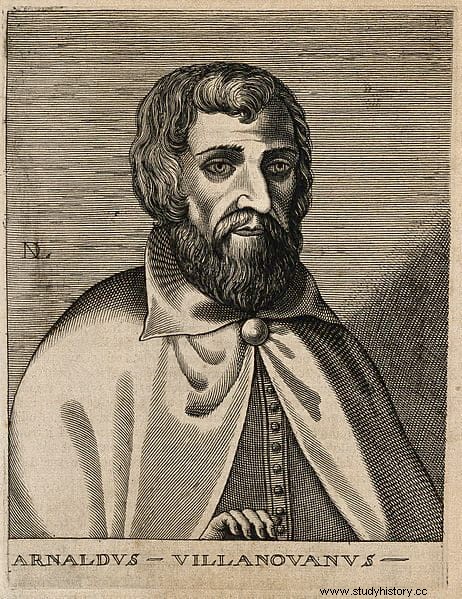
Regarding the Catalan option, it should be added that the surname Vilanova is common in Lleida and also, in medieval times, it had a reference university. It is possible that his ancestors came from there and that is why he defined himself as Arnaus Ilerdensis in his work De spurcitiis pseudo-religiosorum . It is known, on the other hand, that his contemporaries nicknamed him the Catalan ( Arnaldus cathalanus ), that Pope Bonifacio VIII said of him that he was the only good Catalan he knew and that Arnau himself referred to Catalans as «meos compatriots» . However, the references on the matter are so confusing and contradictory that Marcelino Menéndez y Pelayo already wrote in 1880:«Referring to and contradicting the mistakes made by Arnaldo's biographers would be lengthy and annoying» .
In any case, what is certain is that the character soon took flight and left his homeland, probably accompanying his family, to settle in the Valencian kingdom. This was of recent creation, since Jaime I the Conqueror , King of Aragon and Count of Barcelona, had conquered the Muslim Taifa after a campaign carried out between 1233 and 1238 (although the operations still lasted for some time). Arnau and his family settled there, the same place where he was tonsured when taking minor orders at the age of seven, hence some papal writings refer to him as “clericus Valentinae dioecesis” , city where he had properties. But he would travel again. And a lot.
First, around 1260, he went to study in Montpellier, a French Mediterranean city and capital of the lordship of the same name, which had been incorporated into the Aragonese crown in 1204 thanks to the marriage of King Pedro II to María de Montpellier, the parents of Jaime I. located one of the most important medical schools in Europe where Arnau graduated as a magister in Medicine, a profession that also involved training in philosophy and theology; not in vain he followed the scholastic inspiration. Until not long ago it was believed that seven years later he continued his studies in Naples, where he remained until 1267 and had the opportunity to visit the famous Salernitana Medical School, but this seems to be wrong.
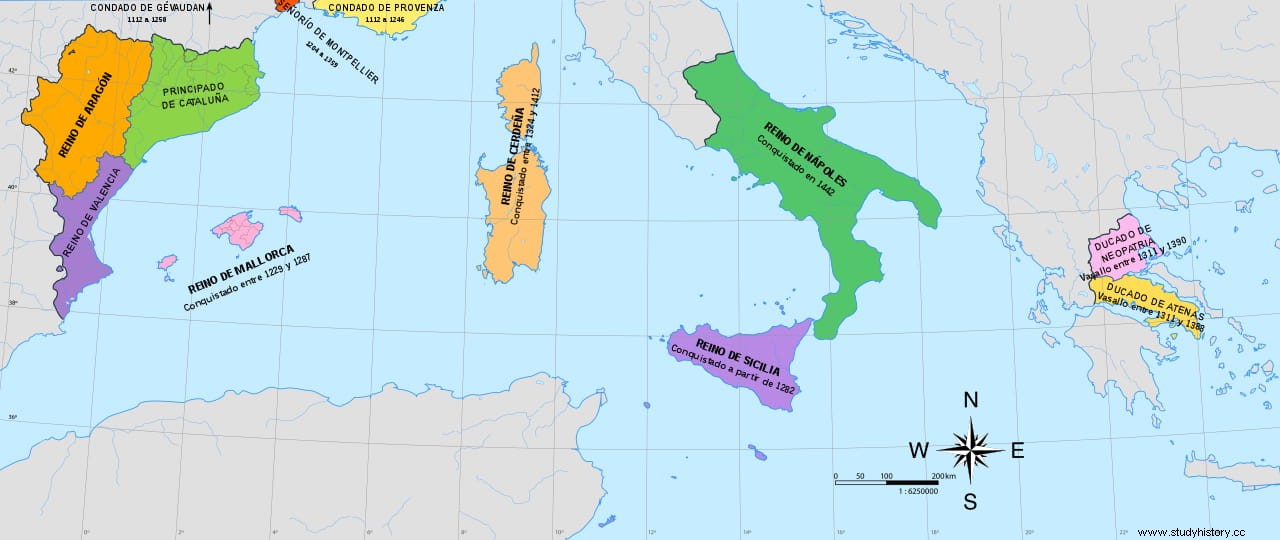
He became a professional of such prestige that merits are attributed to him that in reality he did not have, including having learned from Giovanni de Casamicciola, an illustrious professor of medicine at the University of Naples, or the publication of treatises on alchemy that have now been discarded. that they were his. Regarding this, although in his time he was considered that way and he may have at least had some interest in it, he always did it from a critical perspective (as with magic), like almost all the sages of the time; yes, it is said that the door of his house in Montpellier was decorated with a classic alchemical sign, the ouroboros (a serpent or dragon that bites its own tail).
From 1281 to 1290 he practiced medicine and taught it, forging a great reputation both on a practical level - he was the personal physician of three kings and three popes, and the first health worker to use alcohol as an antiseptic - as well as theoretically. . An abundant bibliographical production remains as evidence of the latter, which would be an obligatory reference for later doctors. He wrote most of the titles while he was in Montpellier, as support for the classes he taught: Parables of medication (anthology of thematic aphorisms), De humildo radicale (theoretical essay), De considerationibus operis medicinee (technical manual), De graduatibus medicinalum (pharmacopoeia), Aphorismi de gradibus (pharmacological dosage ratio), or Simplicity and Antidotarium (drug catalogues).
Perhaps they deserve a separate Regimen sanitatis ad regem Aragonum (description of the treatments applied to the king of Aragon, which was translated into Valencian and Hebrew) or what is probably his masterpiece, Speculum medicinee (a general study of medicine for educational purposes), although the number of titles adds up to twenty-seven insurances, to which must be added fifty more attributed. We have already said that alchemists have been excluded from them (Rosarius Philosophorum, Novum Lumen, Flos Florum …) and others that were previously considered theirs (Breviarium practicae, Regimen sanitatis Salernitanum ).
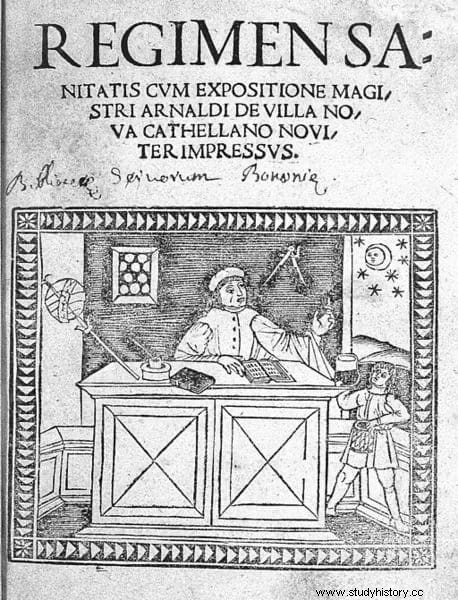
Finally, Arabic translations of classics such as Corpus Hippocraticum are recognized. of Hippocrates and his disciples, Methodo medendi of Galen, De viribus cordis and Canon of Avicenna or De medicinis simplicibu by Abu-l-Salt, as well as a quartet of books of a different nature dealing with topics unrelated to medicine:apocalyptic, sermons, prophecies, letters, religion, astrology...; these are Confessió de Barcelona, Lliçó de Narbonne, Raonament d’Avinyó and Informació spiritual , recently published, for the first time, together under a common heading:AVOThO, acronym for Arnaldi de Villanova Opera Theologica Omnia . It was something pending, since Arnau's medical works were already pending, such as Opera omnia, and they had considerable success, going through dozens of editions over the following centuries.
We said before that Arnau made many trips. This was due to the fact that in 1290 he had entered the service of the Aragonese monarchy, which forced him to settle in Barcelona, first attending to the health of Pedro III as court physician. The death of Pedro III in 1285 freed him from residing in Barcelona and he went to Montpellier to teach, although Alfonso III kept him in charge, which forced him to come and go and, in fact, after the monarch's death in 1291, his successor Jaime II demanded his services periodically. In the Gallic town, by the way, he met his wife, Agnès Blasi, with whom he had a daughter named María. But his relationship with the Aragonese crown was not only medical; he would also represent her in the diplomatic field, when the sovereign sent him to the French court to solve a border problem.
It would be a bittersweet experience, since he took advantage of his stay in Paris to expose his theological ideas, to which he was becoming more and more fond to the detriment of medicine. That exhibition, held in 1300, was the first of the controversies in which he was going to be involved. It was at the Sorbonne University where he presented his Tractatus de tempore adventu Antichristi (Treatise on the time when the Antichrist is to come ), a work influenced by the thought of the Calabrian abbot Joaquín de Fiore, who was a heterodox Franciscan who had already died, in favor of returning to the strict rule (his followers were nicknamed Joaquinites) and who had predicted the end of History for 1260, the date in which the Church would be completely renewed, turning human beings into a kind of ideal monks, full of spirituality.
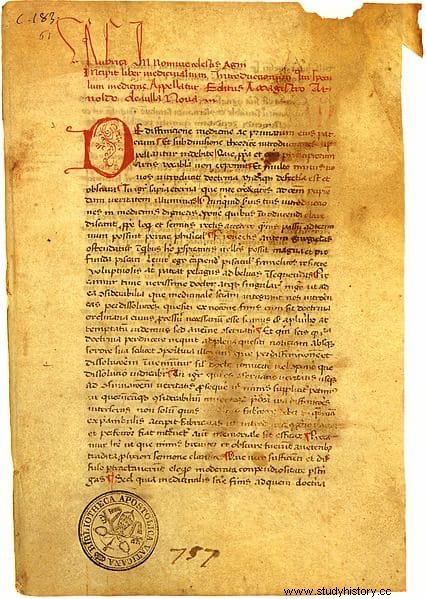
If Joachim of Fiore had initially been condemned at the Fourth Lateran Council -although he was later rehabilitated and even beatified-, Arnau scandalized the Gallic university faculty by a combination of prophecies with criticism of the wealth of the Church and the intolerance of the Dominicans, which he knew from studying with them as a child (ironically, Maria entered that order in 1291). The incident led to an accusation of heresy and subsequent imprisonment, but he was lucky that long ago he had cured Pope Boniface VIII of a painful illness and he intervened on his behalf. The French threw his books into the fire while he managed to get to safety, placing himself under papal protection. Boniface VIII even allowed him to publish a booklet in 1301 in which he vindicated his position.
Opposite, he had the opposition of the offended Dominicans, who refuted his thesis paradoxically led by an old friend of his, Fray Martín de Ateca. He was a learned professor of theology and philosophy - he is considered the first Thomist philosopher of the Kingdom of Aragon - who had been confessor of Jaime II and of Arnau himself. He refuted your Tractatus denying the date he had given for the end of the world, 1378, arguing the impossibility that Man could know his final destiny due to two reasons:that Jesus Christ told the apostles that they do not know «not even the angels of Heaven » and Saint Augustine's thesis that the duration of the sixth and last age of humanity is uncertain; therefore, the prophecies are meaningless.
The pope's death in 1303 changed things substantially because his replacement, Benedict XI, barely lasted eight months and the eagerness with which Arnau had tried to win him over turned against him:he was suspected of participating in a conspiracy to kill him because the pontiff died of fig indigestion, which raised rumors of poisoning and Arnau had published a Tractatus de venenis , although there were so many suspects, from Guillermo de Nogaret (royal adviser of France, in conflict with the pope) to the friends of the previous prelate, through the spiritual Franciscans (a rigorous branch of the order), that Arnau was able to escape unscathed.
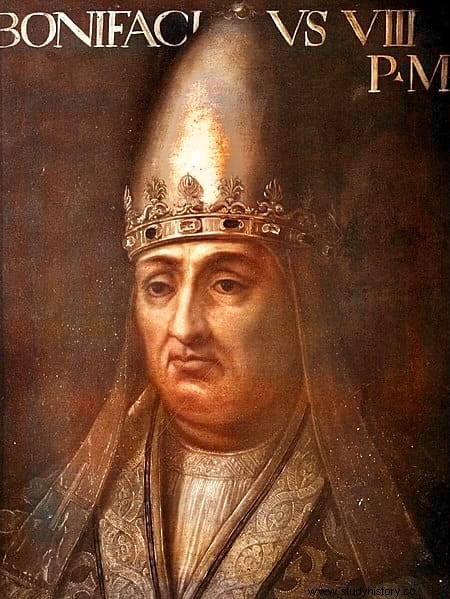
The panorama even improved in 1304, when a friend of his, Clement V, was elected as the new head of the Church, who, together with the Bishop of Valencia Jazperto de Botomat, reviewed his work without finding anything punishable and exonerated him from the open case. by the inquisitor Guillem de Collioure. In fact, Arnau settled in the court of Avignon as a representative of the Kingdom of Aragon, which allowed him to tour Provence preaching on behalf of the Pope (which is why he was also taken to be Provençal). He is almost certainly responsible for the bull that required medical students to know fifteen Greco-Arabic treatises. It was then that his life reached greater intensity, participating in political and religious episodes such as the trial of the Templars in 1307, the aforementioned ideological division of the Franciscan order or the project of organizing a crusade against the Kingdom of Granada, apart from comings and goings to Aragon to attend to the ailments of Jaime II.
Unfortunately, his insistence on apocalyptic themes caused him to fall out of favor with the King of Aragon. In 1309 he found a disciple in his brother, Frederick II, who had asserted by arms his rights over the Kingdom of Sicily against the French Anjou. The trust between the two was such that the monarch asked his teacher for an interpretation of the dream visions he had experienced, without suspecting the conflict that this would cause. Because Arnau thought he saw in those dreams the prediction of a renewal of the Church that would save Christianity, just as Ramón Lull had proposed in his Rex bellator , something that Federico and Jaime would star in, who had also made inquiries of that type.
The thing would not have had greater importance if the clarifying work of the doctor had remained in the personal sphere; but it was not like that except publicly, revealing issues that were intimate, which triggered the uproar in the Aragonese court and in the religious leadership. Arnau had to leave Avignon and settle in Sicily, under the protection of Federico II. A couple of years were enough to cool things down enough for him to get moving again in September 1311:traveling to Rome on a diplomatic mission to try to prevent a war in Italy.
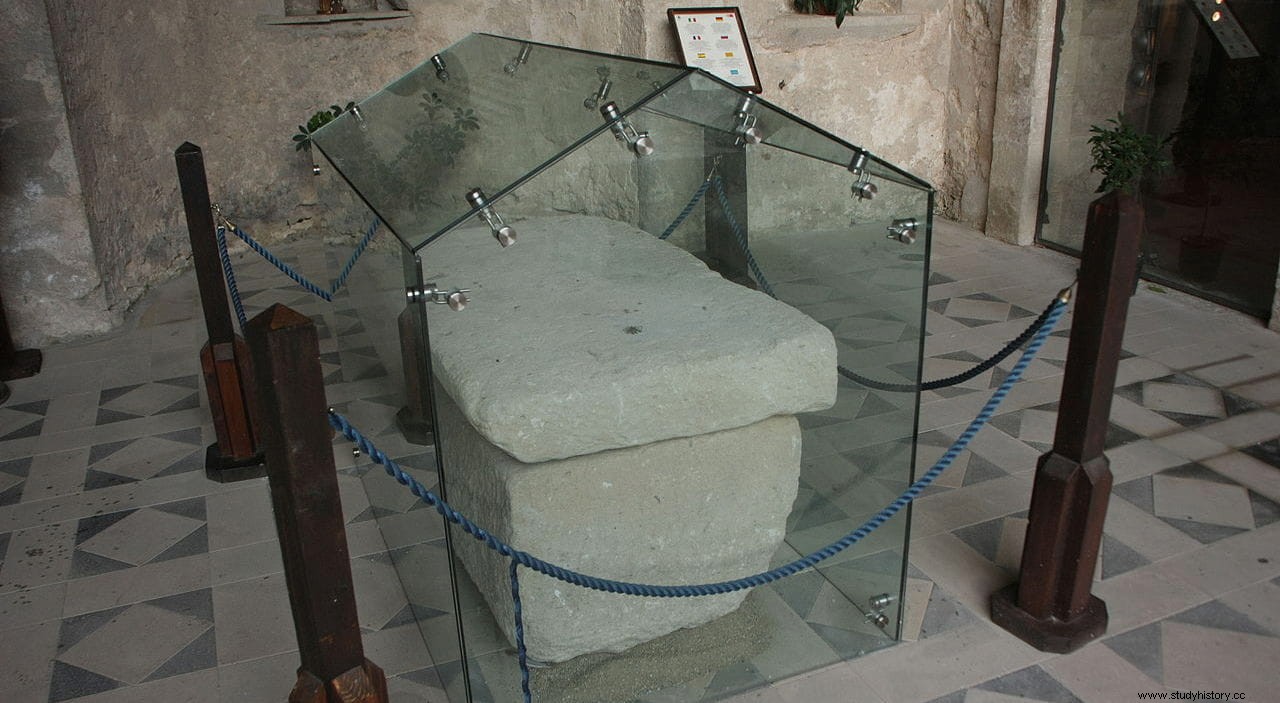
Although the Treaty of Caltabellotta, signed in 1302, brought peace and left the Sicilian throne in the hands of Federico, the condition was that on his death he bequeathed it to the Angevins. But the son of the frustrated Charles of Anjou, Robert I, who reigned in Naples, was also one of the most prominent Guelphs, defenders of the Pope's rule in Italy against the Ghibellines, supporters of control by the Holy Roman Empire. Clement V wanted to reconcile both factions by compensating the Anjou for the loss of Sicily with a newly created kingdom, that of Arles. The opposition of the King of France and the entry into Italy of Emperor Henry VI turned the peninsula into a dangerous hornet's nest that Arnau tried to avoid when death surprised him.
Actually, to say that he surprised her may be considered a bit of an exaggeration, considering that he must have been around seventy-one at the time, much older than the average life expectancy of that time. But it is that it was not a death due to natural causes but drowned, the result of a shipwreck when he was sailing off Genoa.
This was the fateful end of a character who, in a letter to Boniface VIII, masterfully described himself as “homo sylvester, theoricus ignotus et practicus rusticanus” (wild man, unknown theoretician and practical villager), «natus ex gleba ignobile et obscura» (born in an unknown terroir or and dark). Fortunately, he did not learn that his "spiritual" works would be condemned in 1316.
